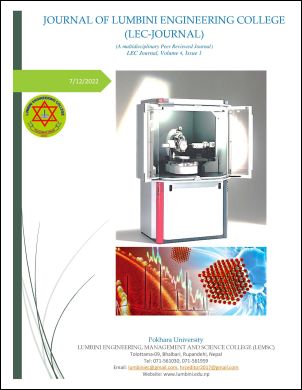Structural Identification of Cubic Aluminum and Non-Cubic Titanium using X-Ray Diffractometer
DOI:
https://doi.org/10.3126/lecj.v4i1.49369Keywords:
Crystalline samples, XRD, indexing, lattice parameters, cubic and non-cubic systemsAbstract
The unknown crystalline samples like minerals, inorganic compounds etc. are identified mostly with the help of X-ray diffraction (XRD). More than 25 Nobel prizes have been awarded to the works based on it. The identification of the solids are essential for the research in various streams of science like Material, Environmental, Geo, Engineering and Biology. The XRD is based on Bragg’s law. The diffraction pattern obtained after passing the X-ray through interatomic slit is the main source of the structure. It was first demonstrated by Max von Laue (1912). The XRD is now attached with instrumental and computational tools. This paper focus on different steps for the indexing of an X-ray diffraction pattern, identifying the Bravais lattice, and calculating the lattice parameters of the cubic (Al) and non-cubic (Ti) system that are the starting elements we have used for the preparation of MXene. We have used the experimental and mathematical ways for the determinations of the intended structural values. The values obtained were in well agreement with the standard data.
Downloads
Downloads
Published
How to Cite
Issue
Section
License
Copyright (c) 2022 LEC Pokhara University

This work is licensed under a Creative Commons Attribution-NonCommercial 4.0 International License.
This license allows reusers to distribute, remix, adapt, and build upon the material in any medium or format for non-commercial purposes only, and only so long as attribution is given to the creator.




